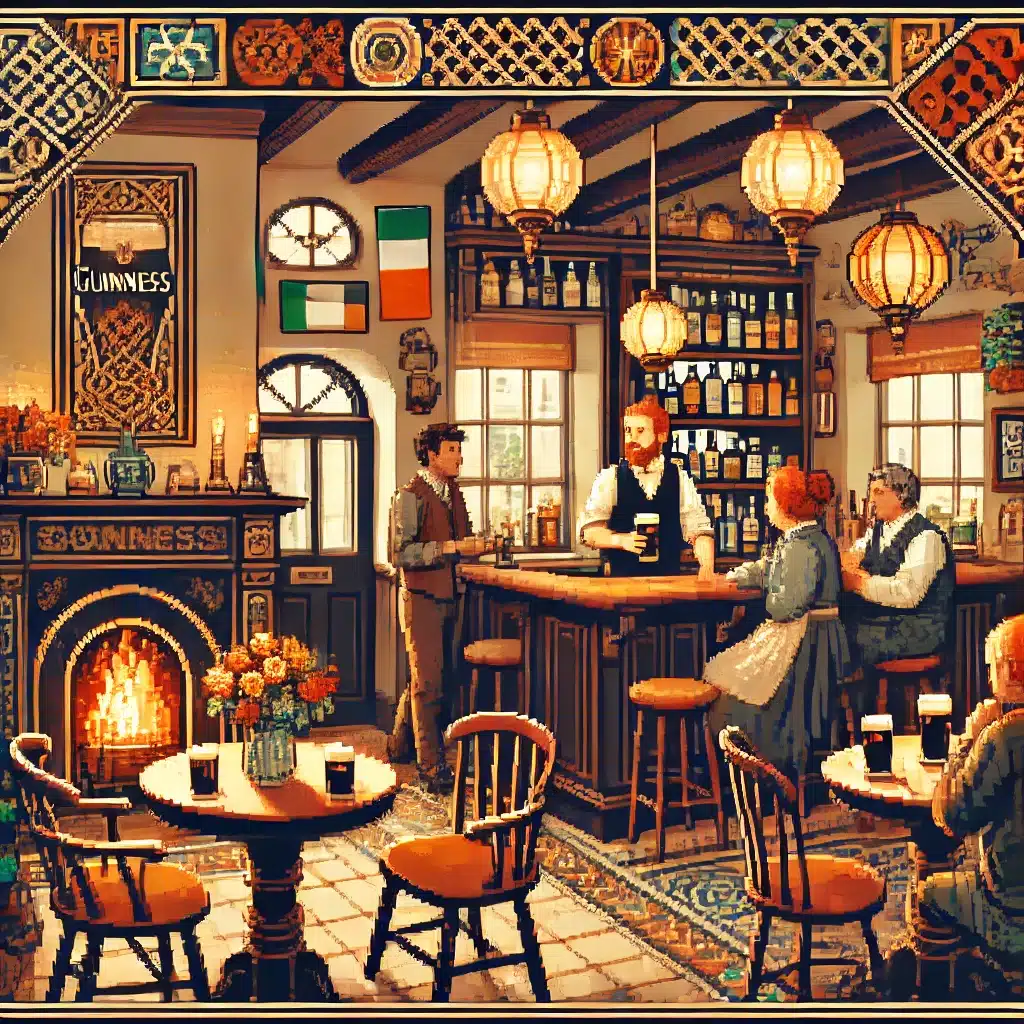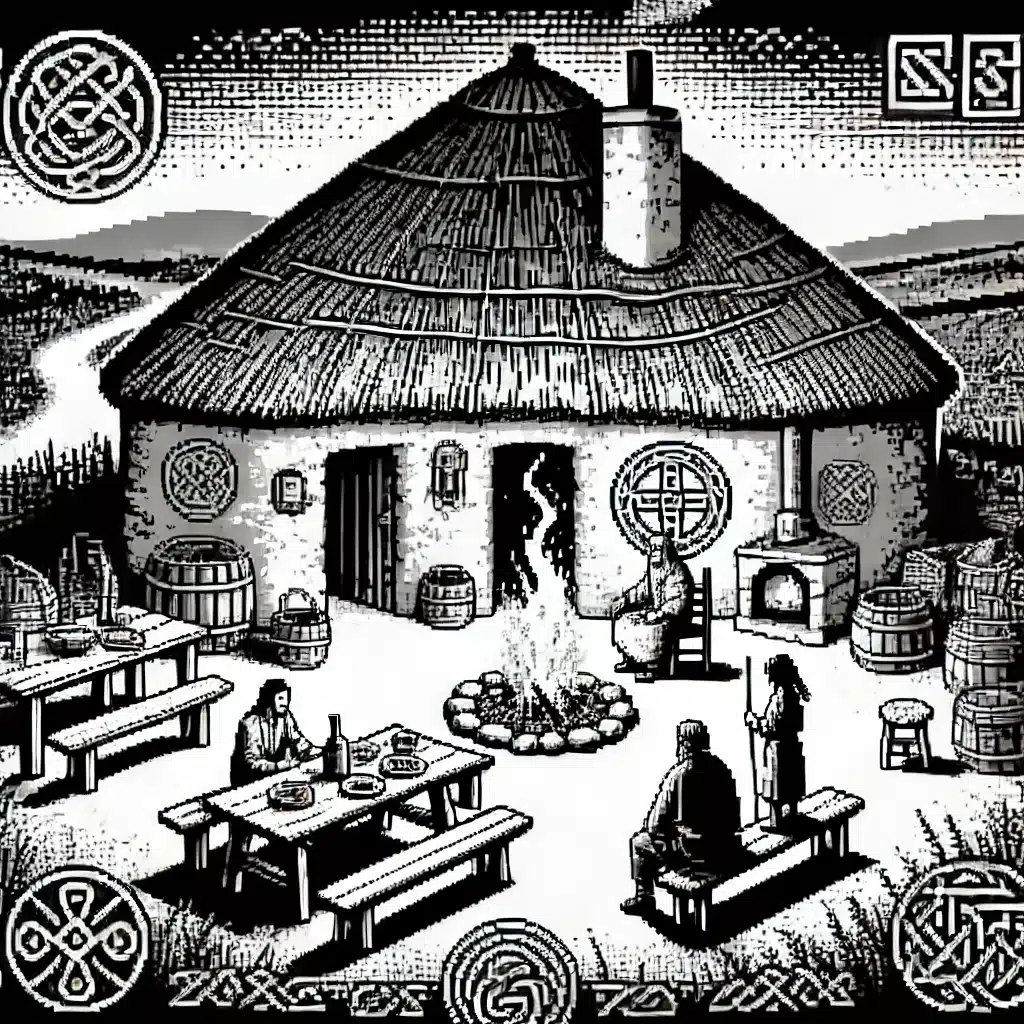Ireland’s café culture is a mix of warmth, hospitality, and simplicity. Whether you’re enjoying a cupán tae (cup of tea) in a bustling Dublin café or ordering a slice of soda bread in a quiet rural tearoom, knowing a few key phrases in Irish can enrich the experience. This guide explores essential café-related vocabulary and phrases to help you navigate these moments with ease while connecting with the Irish language and culture.
Irish Phrases for Ordering and Café Small Talk
Starting with Greetings
Before diving into your order, start with a warm greeting:
- Dia duit (pronounced: JEE-uh ghwitch) – “Hello.”
- Conas atá tú? (pronounced: KUN-uhs uh-TAW too) – “How are you?”
These are the foundation for friendly exchanges, even in a casual setting like a café.
Ordering Your Tea or Coffee
To order a drink, use the phrase:

- Ba mhaith liom cupán tae, le do thoil. (pronounced: BAH WAH lyum KUP-awn tay, leh duh hull) – “I would like a cup of tea, please.”
Breaking it down:
- Ba mhaith liom – “I would like.”
- Cupán tae – “A cup of tea.”
- Le do thoil – “Please.”
For coffee lovers:
- Ba mhaith liom cupán caife, le do thoil. (pronounced: BAH WAH lyum KUP-awn KAH-feh) – “I would like a cup of coffee, please.”
Adding Milk, Sugar, or Other Preferences
To customize your drink:
- Gan bainne (pronounced: GON BAHN-yuh) – “Without milk.”
- Le siúcra (pronounced: leh SHOOK-rah) – “With sugar.”
- Le bainne (pronounced: leh BAHN-yuh) – “With milk.”
These phrases allow you to tailor your drink just the way you like it.
Ordering Food
To order a snack or meal, try:
- Ba mhaith liom ceapaire, le do thoil. (pronounced: BAH WAH lyum KAP-uh-ruh, leh duh hull) – “I would like a sandwich, please.”
- An bhfuil anraith ar fáil? (pronounced: Un WILL AHN-rahth air FAWL?) – “Is soup available?”
- Ba mhaith liom cáca milis. (pronounced: BAH WAH lyum KAW-kuh MIL-ish) – “I would like a sweet cake.”
Expressing Thanks and Appreciation
Once your food arrives, showing gratitude is essential:
- Go raibh maith agat. (pronounced: Guh rev mah ah-gut) – “Thank you.”
- Tá sé go hálainn. (pronounced: TAW shay guh HAW-lin) – “It is lovely.”
Compliments on food are always appreciated in Irish culture.
Paying the Bill
When it’s time to pay, you can say:
- An féidir liom íoc anois? (pronounced: On FAY-der lyum EE-uhk uh-NISH?) – “Can I pay now?”
To ask how much something costs:
- Cé mhéad é seo? (pronounced: Kay VAYD ay shuh?) – “How much is this?”
Weather and Small Talk at the Café
While enjoying your drink, small talk about the weather is common:
- Tá sé scamallach inniu. (pronounced: TAW shay SKAH-mull-ukh IN-yoo) – “It is cloudy today.”
- Tá an lá go deas. (pronounced: TAW un LAW guh JASS) – “The day is nice.”
These phrases help you ease into light, friendly conversations with locals.
Ancient Irish and the Culture of Hospitality

Hospitality has deep roots in early Irish society, as evidenced by the Brehon Laws, which codified the responsibilities of hosts and guests. These laws mandated that a host provide food, drink, and shelter to travelers, reflecting the centrality of shared meals in fostering community bonds.
In mythological texts, food and drink often symbolize trust and the forging of alliances. For example, in Fled Bricrenn (Bricriu’s Feast), the act of hosting a grand feast serves as a test of loyalty and honor among warriors. The language used in these feasts reflects the ritualistic importance of hospitality.
Though modern cafés are far removed from these ancient settings, the spirit of hospitality persists in how food and drink are shared and enjoyed in Irish culture. The act of offering tea, a sandwich, or a warm conversation at a café echoes these enduring values.
Conclusion
Learning Irish café phrases equips you with practical tools for navigating Ireland’s hospitality scene while connecting to the language’s cultural depth. Whether ordering a cupán tae or discussing the weather over ceapaire, these expressions bring your interactions to life.
To find out more about my writing journey please here or to contact me see here.
Disclaimer: This post was written with the support of an AI assistant.

Leave a Reply
You must be logged in to post a comment.